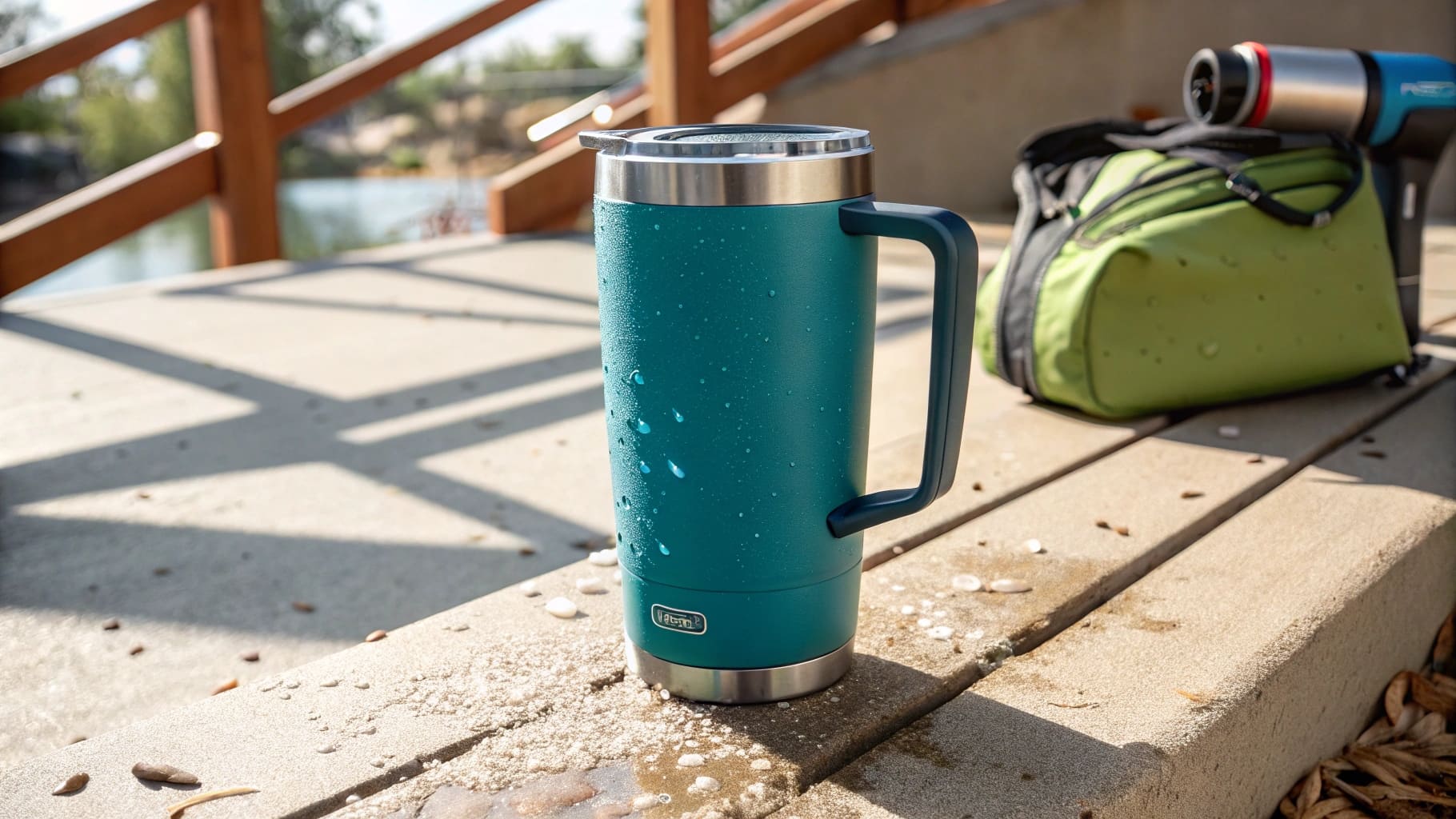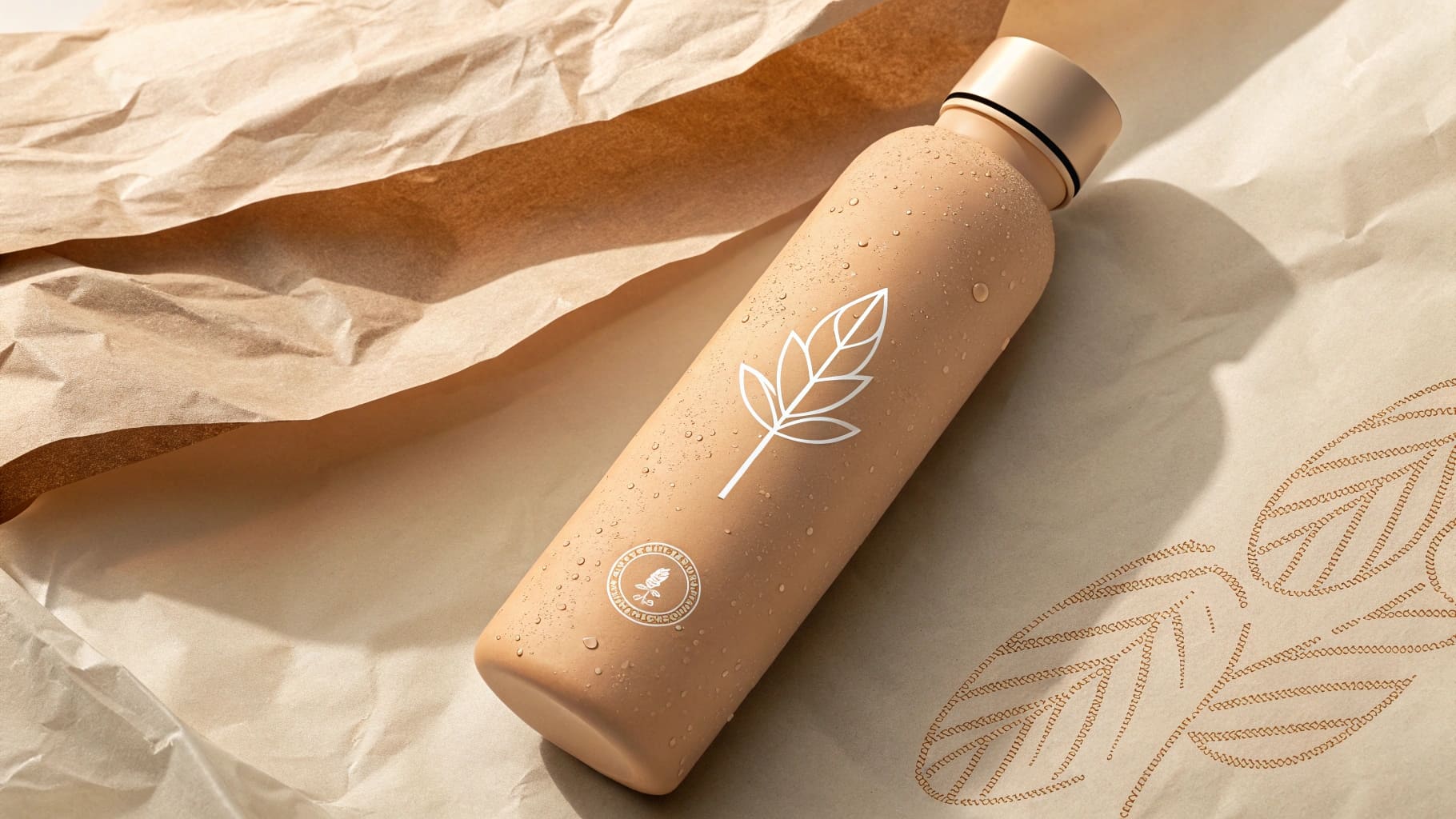Struggling with stainless steel choices for your products? Unsure which grade truly meets your quality standards? Get the clarity you need right now.
For most B2B buyers, 304 stainless steel is the industry standard for food-grade items like water bottles, offering a great mix of corrosion resistance and durability. Cheaper 201 steel, however, rusts more easily and is less suitable for drinkware, impacting your brand's reputation.

Understanding these material differences is very important when you're sourcing products like hip flasks, water bottles, or coffee mugs. As someone who has been in the stainless steel business here in China for years, I've seen how crucial this knowledge is for my clients, like procurement officers from large companies or startup bosses aiming to build a quality brand. Your choice affects product safety, longevity, and ultimately, customer satisfaction. So, let's dive deeper into these common stainless steel types.
What is the description of 304 stainless steel?
Confused about 304 stainless steel's true benefits? Need a simple explanation for your import business? Understand its core advantages quickly to make informed decisions.
304 stainless steel, often called 18/8, contains 18% chromium and 8% nickel. This composition gives it excellent corrosion resistance and formability, making it the most common choice for quality food-grade products, including the tumblers and cups we produce.

When we talk about 304 stainless steel at Icobottle, we're discussing a material that has become a benchmark for quality in many industries, especially for products that come into contact with food and beverages. Its reputation isn't accidental; it's built on a solid foundation of performance and reliability.
Key Composition and Its Impact
The "18/8" designation for 304 stainless steel refers to its typical chromium (around 18%) and nickel (around 8%) content. Chromium is the star player for corrosion resistance. It forms a thin, invisible, and self-repairing passive layer of chromium oxide on the steel's surface. This layer protects the iron content from rusting. Nickel enhances this corrosion resistance, particularly against certain acids, and also improves the steel's formability and weldability. This makes it easier for us manufacturers to shape it into complex designs like our water bottles and coffee mugs without compromising its integrity. The relatively high nickel content is a key differentiator from lower-cost alternatives like 201 stainless steel, which has less nickel and more manganese, making it more susceptible to rust.
Why 304 is a Favorite for Drinkware and Food Applications
For products like the stainless steel water bottles and hip flasks we export to America and Europe, 304 is the preferred material for several reasons:
- Food-Grade Safety: It doesn't react with foodstuffs or beverages, so it won't leach harmful substances or impart any metallic taste. This is critical for compliance and consumer trust.
- Durability: It can withstand daily use, including minor drops and bumps, and resists scratches well.
- Hygienic Properties: The smooth, non-porous surface of 304 stainless steel is easy to clean and doesn't harbor bacteria.
- Aesthetic Appeal: It maintains a bright, attractive finish for a long time.
My clients, including startup owners and procurement officers, appreciate that specifying 304 stainless steel means they are getting a product that meets international quality expectations. It’s the workhorse material that balances cost, performance, and manufacturing ease effectively.
How to check the quality of stainless steel?
Worried about suppliers cutting corners on materials? Need reliable ways to ensure you're getting genuine stainless steel? Learn effective verification methods now.
You can check stainless steel quality by requesting Mill Test Certificates (MTCs) from your supplier, performing simple chemical spot tests for key elements like nickel or manganese, or using an X-Ray Fluorescence (XRF) analyzer for precise elemental composition.

Ensuring the quality of stainless steel is a major concern for buyers like Mark Shenng, especially when sourcing from overseas. As a manufacturer in China, we at Icobottle understand this and believe in transparency. After all, your brand reputation depends on the quality of the products you sell. Here’s how you, as a B2B buyer, can approach quality verification.
The Importance of Material Certifications
The first line of defense is always documentation. Reputable suppliers should provide a Mill Test Certificate (MTC) or Material Test Report (MTR) for the stainless steel used.
- What is it? An MTC is a quality assurance document from the steel mill that certifies the material's chemical composition, mechanical properties, and compliance with specific standards (e.g., ASTM, EN).
- What to look for: Check that the chemical breakdown matches the grade ordered (e.g., for 304, ~18% Cr, ~8% Ni). Ensure the supplier name and heat numbers on the certificate correspond to the materials used for your order.
I've heard from clients about experiences with certificate fraud from other, less scrupulous suppliers. This is why building a relationship with a trustworthy manufacturer who has robust quality control, like us at Icobottle, is so important. We ensure full traceability for our materials.
Simple On-the-Spot Tests
While not as definitive as lab tests, some quick checks can give indications:
- Magnet Test: Austenitic stainless steels like 304 are generally non-magnetic in their annealed (softened) state. However, cold working (like bending or forming it into a bottle shape) can induce some magnetism. So, if a "304" product is strongly magnetic, it might be a lower grade like a 200 series or a ferritic 400 series steel. If it's weakly magnetic, it could still be 304 that's been work-hardened. This test is indicative, not conclusive.
- Chemical Spot Test Kits: These kits can detect the presence of certain elements. For example, a manganese spot test can help differentiate 200 series (high manganese) from 300 series (low manganese). Nickel test kits can also help confirm if the nickel content is in the expected range for 304. These are useful for quick screening but don't give exact percentages.
Advanced Verification: XRF Analysis
For precise, non-destructive elemental analysis, an X-Ray Fluorescence (XRF) analyzer is the gold standard.
- How it works: The device emits X-rays, which cause the atoms in the steel sample to fluoresce, emitting secondary X-rays. The analyzer detects these secondary X-rays to identify the elements present and their concentrations.
While these devices are expensive, serious importers or third-party inspection services often use them. At Icobottle, we ensure our raw material suppliers meet strict specifications, often verified through such advanced methods, before the steel even enters our production line for tumblers and cups. This rigorous approach helps prevent issues later on.
Ultimately, a multi-pronged approach involving trusted suppliers, proper documentation, and selective testing offers the best assurance.
Is 316 stainless steel better than 304?
Heard 316 stainless steel offers superior performance? Wondering if the higher cost justifies its use for your drinkware products? Understand the key differences clearly.
Yes, 316 stainless steel generally offers better corrosion resistance than 304, especially against chlorides and harsh acids, due to its added molybdenum. However, it's more expensive. For most water bottles, 304 provides sufficient quality and performance.

When discussing stainless steel for products like the water bottles and coffee mugs we manufacture, the conversation often comes up: is 316 worth the extra investment compared to 304? As a supplier focused on B2B clients who, like Mark Shenng, are sensitive to quality but also seek competitive pricing, I always aim to provide a balanced view.
The Molybdenum Difference in 316
The primary distinction between 304 and 316 stainless steel lies in their chemical composition. While both are austenitic stainless steels rich in chromium and nickel, 316 stainless steel includes about 2-3% molybdenum. This addition of molybdenum significantly enhances its corrosion resistance, particularly against:
- Chlorides: This makes 316 much better suited for marine environments or areas where de-icing salts are common.
- Pitting and Crevice Corrosion: Molybdenum helps protect against these localized forms of corrosion, which can be an issue in harsh chemical environments.
- Acids: 316 generally shows better resistance to a wider range of acids compared to 304.
This enhanced resistance makes 316 stainless steel the material of choice for applications like surgical implants, pharmaceutical processing equipment, and, in the context of drinkware, for very high-end bottles or those marketed for extreme conditions.
Cost vs. Performance: A Key Consideration
The improved properties of 316 come at a price. Molybdenum is an expensive alloying element, and 316 typically contains slightly more nickel than 304 as well, further increasing its cost. This means products made from 316 stainless steel will be more expensive than their 304 counterparts. For procurement officers and company owners, this cost difference must be weighed against the actual performance needs.
Here's a simple comparison:
| Feature | 304 Stainless Steel (e.g., for our standard tumblers) | 316 Stainless Steel (e.g., for specialized flasks) |
|---|---|---|
| Molybdenum | No | Yes (2-3%) |
| Corrosion Resistance | Good general resistance | Excellent, especially against chlorides & acids |
| Typical Use Cases | Most water bottles, cups, food-grade applications | Marine hardware, medical, premium/specialty bottles |
| Cost | Standard | Higher / Premium |
| Food Grade | Yes | Yes |
When is 316 the Right Choice for Drinkware?
For the vast majority of everyday stainless steel water bottles, coffee mugs, and tumblers, 304 stainless steel provides perfectly adequate corrosion resistance and durability. It's safe, reliable, and cost-effective. I usually tell my clients that unless their product is specifically intended for use with highly corrosive substances regularly, or if they are targeting a niche market that values (and is willing to pay for) the "premium" aspect of 316, then 304 is usually the optimal choice. For someone like Mark, who needs quality but is also watching costs for his distribution business, 304 often hits that sweet spot perfectly. If your brand story revolves around ultimate durability or use in extreme conditions, then 316 can be a strong selling point.
Conclusion
Understanding 304, 201, and 316 steel helps you choose wisely. Prioritize certified 304 for most drinkware, ensuring quality and value for your B2B needs.

